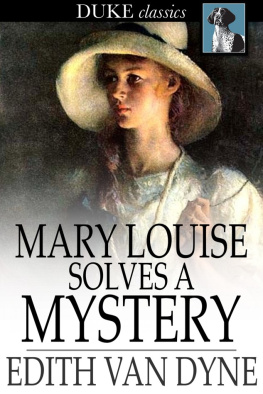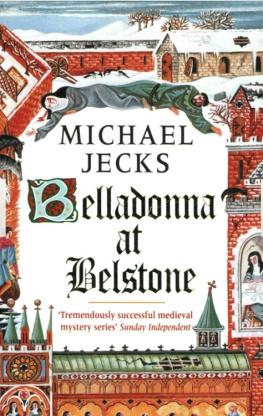Michael Jecks
THE TRAITOR OF ST GILES
2000
I have always had a fondness for Tiverton. Its one of those old market towns which has been altered almost out of recognition in recent years: one-way systems and, more recently, pedestrianisation make it a difficult place to get to its even worse finding a parking space but local councils and central government havent managed to entirely destroy its atmosphere. My own ties with the town extend to my being married in Tivertons Register Office and I can recommend it as a venue!
It was while on honeymoon in Devon that my wife and I visited Tiverton Castle, Bickleigh Castle and Fursdon House, the three places which inspired The Last Templar and subsequent stories. For some time recently I had been promising myself that I would return north of Crediton to base another story in Tiverton itself. This book is the result.
Tiverton was founded under the Saxons; the name comes from Twyfyrde, or Two Fords because it lies between two rivers, the Exe and the Lowman. In 1106 King Henry I gave it to Richard de Redvers and it was Richards son Baldwin who became the first Earl of Devon. The castle was built by the de Redvers family, but they died out in 1293 and the castle then passed to Hugh de Courtenay, who became Earl himself in 1335, a mere five years before his death.
Little remains of the early castle buildings, but there is enough to give you a good feel for the place. It was held by Royalists in the Civil War, and when Fairfax and his Roundheads captured it they slighted it (i.e. destroyed it as a defensible fortress) to prevent its being held against Parliament again: the curtain walls to west and north were blown up or pulled down. A huge southeastern tower survives, there are fragments of a hall visible and some of the 14th-century solar block remains but there is little else from the 1300s.
Although Tiverton Castle has been badly knocked about over the years it is well worth a visit. Its museum holds a fascinating collection of Civil War arms and armour. Equally interesting are Bickleigh Castle a few miles to the south, and Fursdon House near Cadbury. I can also recommend a visit to Templeton, a beautiful little village to the west of Tiverton.
Lord Hugh de Courtenay was an interesting character. The early 1300s were dangerous times to live in and yet he managed to survive in a world of richer and more powerful magnates.
King Edward II was very fond of his favourites. The first was Piers Gaveston, the younger son of a Barnaise knight, who compounded the jealousy that better-born men felt for him by giving them disrespectful nicknames. For example, he referred to the Earl of Warwick as the black dog of Arden and the Earl of Gloucester as a cuckolds bird. During the reign of King Edward I, Gaveston was banished from the realm, but as soon as Edward I died, his son recalled his companion (and, most believe, homosexual lover) from exile. He smothered Gaveston with titles and lavish presents, giving him the Earldom of Cornwall and the honour and castle of Berkhamstead among others, and arranging for Gavestons marriage to Margaret de Clare, the Kings niece.
Gaveston was thrown from the kingdom when Parliament selected Ordainers among them Lord Hugh de Courtenay to control the realm better and stop the Kings spendthrift habits from ruining the country. During the Parliament of 1311 they forced the King to accept new counsellors, but their success was short-lived since the King soon invited Gaveston back. Certainly the barons and earls believed that Gaveston had returned because, that same November, Lord Hugh was one of two men ordered to seek him in the West Country.
The end of Gaveston came the next year, when he was executed by lords sick of his greed and fearful or jealous of his hold over the King. However, this wasnt the end of the Kings troublesome selection of his friends, because now he chose young Hugh Despenser as his favourite; Despenser being the greediest and most corrupt baron the King could have fixed upon as advisor and again, probably, lover.
Hugh Despenser the Younger, as he is now known, was if anything more ambitious than Gaveston. His marriage to Eleanor de Clare (arranged by the King) ensured his wealth when, at Bannockburn, her brother Gilbert de Clare died without an heir. The Clare estates were subsequently split up and divided between his sisters and their husbands, and Despenser, being favoured by the King, was able to extort those pieces of land he wanted. He was arrogant, determined, and prepared to use violence whenever it suited him.
The Despenser War of 1321, which was precipitated by Despensers blatant avarice and during which the Despenser lands were wasted by a loose confederation of Marcher Lords determined to remove this threat to their properties, marked a turning point in King Edward IIs reign. Afterwards the Despensers returned to rule the nation with an iron hand, but for a short time again it appeared that wiser counsel would prevail and the King might be better advised.
In 1321, the year of this story, the Despensers were exiled. As with Gaveston it was only a short time before the King allowed them back, and the result was the Despenser tyranny, which lasted for four years before the two Despensers, Older and Younger, were overthrown and executed as traitors.
The Young Despenser is said to have stated that he wanted to be rich. When Gilbert de Clare died, the Youngers share of the Clare inheritance was some 1,507 each year, mostly from Welsh property; by the time he died in 1326, Despenser was worth more than 7,500 each year, as well as holding over 3,000 worth of moveable goods and, at one time, having nearly 6,000 on deposit with Italian bankers. One can only guess at the level of corruption involved in his government.
However, through all of the madness and mayhem of the civil wars, through the arguments with the King, the disputes between the barons and eventually the war between King Edward II and his Queen, Lord Hugh survived. There is little in any book about someone who was ever on the fringes of power and never made himself hugely rich, but I hope that if he were to read my description of him, Lord Hugh would not be overly upset. I think he has to have been shrewd and capable, to have lived to die of old age!
Other characters have been entirely invented. There was no Sir Gilbert of Carlisle to my knowledge, nor was there a Sir Peregrine of Barnstaple. My merchants, breadmakers, whores, men-at-arms, ratcatchers and others are also the result of my imagination.
For those who wish to learn more of the history of the period, I can recommend Mary Saalers book Edward II and May McKisacks The Fourteenth Century. For more about the Templars, look at John J. Robinsons Dungeon, Fire and Sword and Edward Burmans Supremely Abominable Crimes, while for a marvellous summary of the persecution itself, Norman Cohns superb book Europes Inner Demons shows how the Order was destroyed through malicious propaganda and how such persecution continues down the ages.
There are some terms and concepts in these pages which might cause readers to think I have not checked my proofs or that my copy-editor missed whole pieces of text. Life was considerably more simple in those days. Justice was more a means of ensuring that revenues to the Crown were protected, rather than ensuring that villeins and other subjects had their interests protected.
It was the duty of the jury in the first instance to report to the justices what crimes had been committed and who they thought was responsible. This was the jury of presentment. They reported by issuing their veredicta, which were their charges, and the miserable felon would then be hauled off to wait for the trial of gaol delivery, which was when he would be tried by the visiting justices. Here again the jurors would present the facts and the justices would make their decision.










